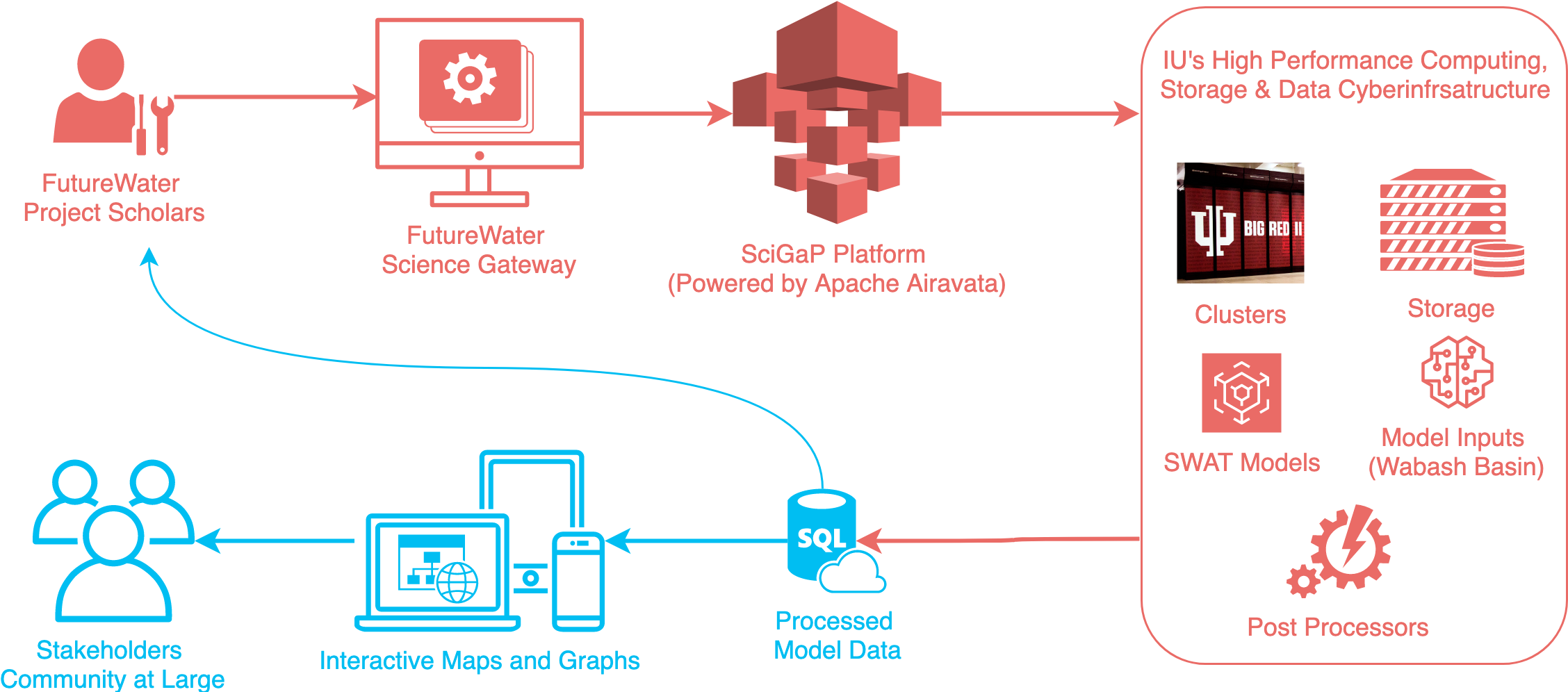We endeavor to change the way that science results are communicated. All our models and data are available to the public. Go to on the upper right corner, click either login or create an account
Future Water Project is ....
Our hydrological data and model source codes are hosted on IU’s exceptional High-Performance Computing cyberinfrastructure. Collaborators can run their own models by modifying the input files or mine the huge catches of modeling output files stored on Big Red 200 and analyze the data to answer questions related to their own disciplines. Contact Professor Chen Zhu with your idea and needs (chenzhu@indiana.edu).
Future Water Computations
Computations are done by water resource experts and scholar collaborators. Our hydrological data and model source codes will be hosted on IU’s exceptional High-Performance Computing cyberinfrastructure. Collaborators can either run their own models by modifying the input files or mine the huge catches of modeling output files stored on Big Red II and analyze the data to answer questions related to their own disciplines. These models could become research infrastructure for student dissertation research across schools and disciplines with downstream applications, for instances of flood frequency forecasting, social-economic modeling, and animal migrations. We envision a near future where our models and gateway, once fully developed, become a platform for future research collaboration and service toward better management of water quantity and water quality in Indiana.

These models and the science gateway that host them are teaching infrastructure for student dissertation research across schools and disciplines with downstream applications, for instances of flood frequency forecasting, social-economic modeling, and animal migrations. To scaffold student learning, work is underway to develop teaching modules available for undergraduate and K-12 education. Students can select a subbasin, a climate forecast scenario (RCP 4.5 and 8.5), and a time period (the 2020s, 2050s, 2080s) and compare water availability under different policy scenarios. The visuals and a specific geographic location, close to the students’ hometowns, help students apply climate change theory to real-world problems, making what was once abstract into something concrete and memorable.
Contact Us
The Future Water gateway is part of the "Prepared for Environmental Change" Grand Challenge
Gateway PI: Chen Zhu
Email: Chen
The Future Water Science Gateway is hosted at SciGaP gateway platform managed by CIRC (Cyberinfrastructure Integration Research Center)
Email: CIRC
The Gateway is based on Apache Airavata